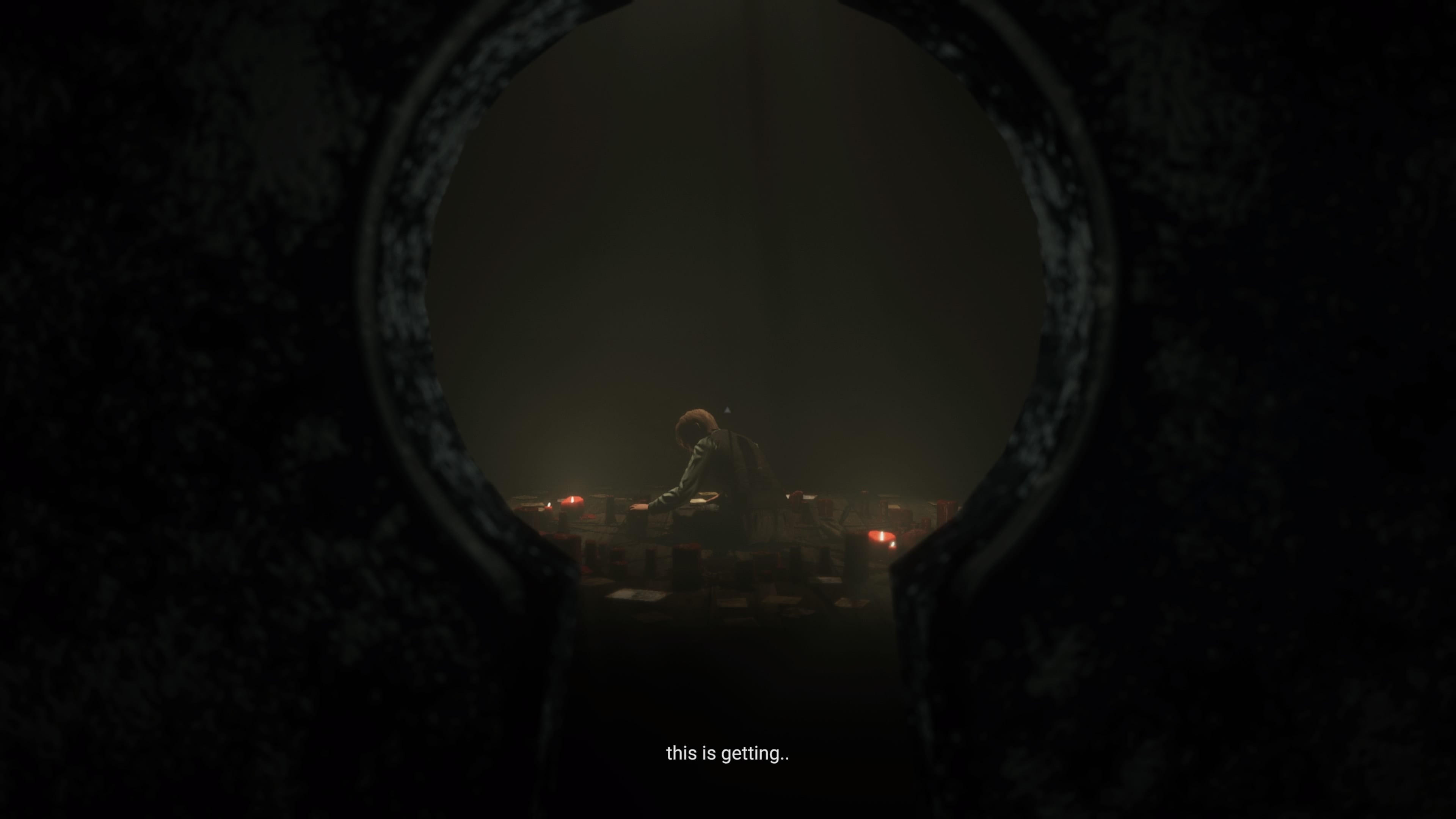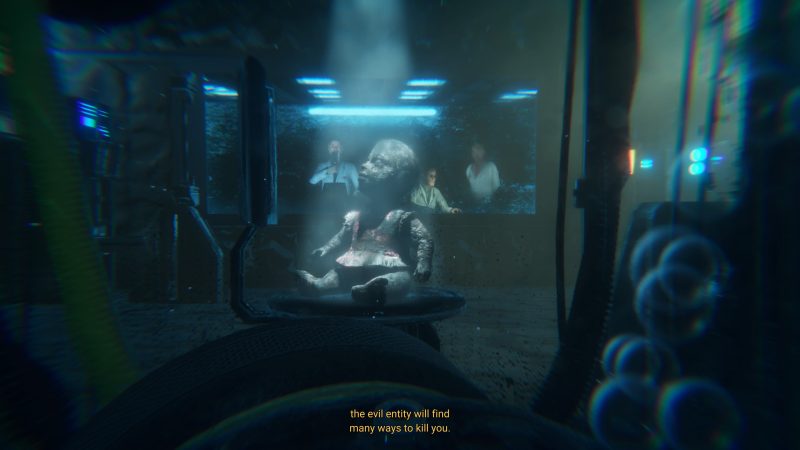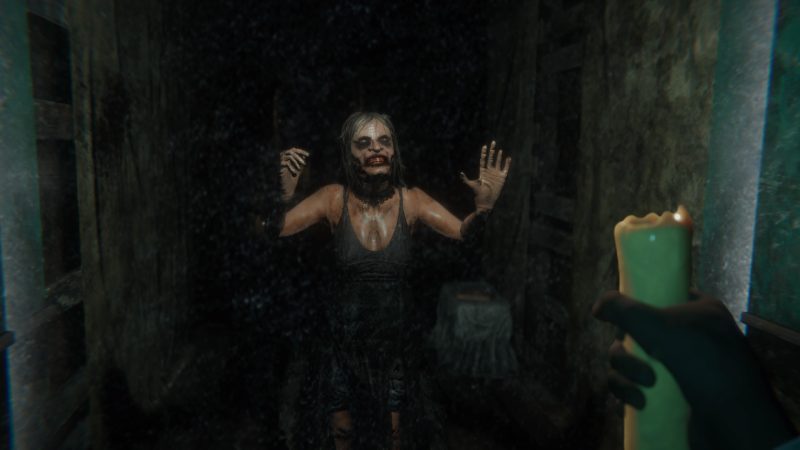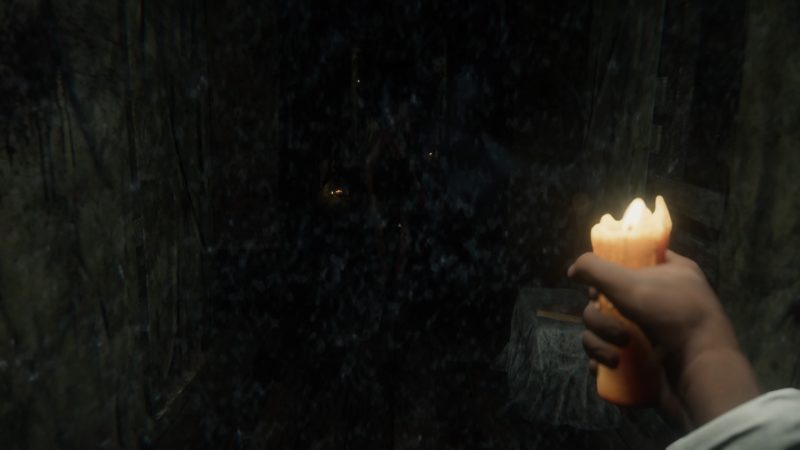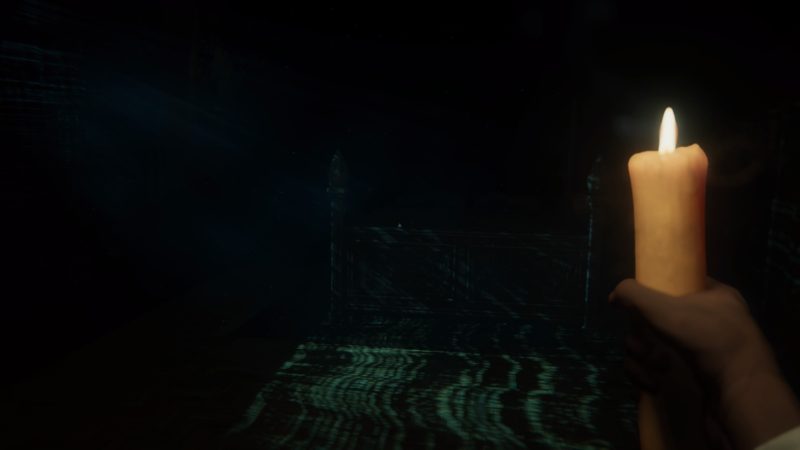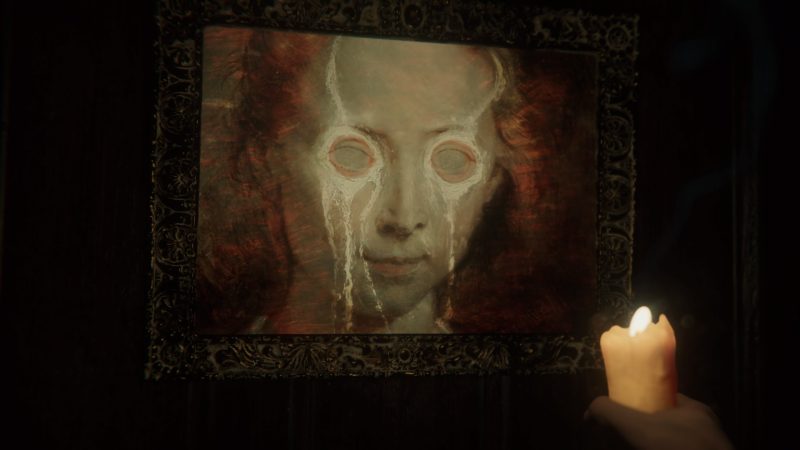Project Nightmares Case 36: Henrietta Kedward Review (PS5) – The indie horror scene is really something special, bringing gamers tons of different styles and ideas. Unfortunately, most of those games remain on PC.
Thankfully, some of these are trickling onto consoles. The most recent one is Project Nightmares: Case 36 Henrietta Kenward. Indie games are never without their limitations, but Case 36 still keeps things interesting.
Project Nightmares Case 36: Henrietta Kedward Review (PS5) – Big Ideas That Mostly Work Together
Project Nightmares spares no extra time in its premise. A group of scientists have you in a submerged tank, bubbles rising from your mouthpiece, as they explain the plan.
In front of you is a creepy doll, Case 36, and they will synchronize your subconscious with the entity possessing the doll. In doing so, you can enter the demon’s domain to find a way to expel it.
Remember: If you die in the Matrix, you die here. The same goes for your time in the tank.
In this reverse possession of a game, you find a tumultuous, labyrinthine in the form of a rundown house with all kinds of supernatural things going on. The main one is possessed Henrietta Kenward (Evil Dead fans ought to have caught the reference already).
She acts as the perpetual threat, and she patrols a centric zone that you return to regularly.
If Henrietta sees you, she chases you. Thankfully, there are safe zones from her outside the grid she patrols. These hide behind salt barriers that she cannot cross. She’s hideous and fast, and you do not want her catching you.
There’s no quick turn command either. So, if she catches you in the wrong scenario, you’re as good as dead.
More Suspense Than Fear
To elaborate, the kind of horror at play here is more suspenseful than it is horrific or psychological. Equally so, the game delivers this style well for the most part. The hide-chase sequences bring a lot of tension on their own.
The one thing the game tries to sell you is its procedurally-generated horror elements. The vast majority of the time, these are just random objects flying across the hall, music boxes playing, or doors creaking open. They add an element for sure, but honestly you get numb to these rather quickly.
Every once in a while, a random event will take place, like a headless woman crawling across the floor. These are technically scripted events, but they never happen in the same place twice.
Again, they add to the general disorder in the place, but they don’t add much context. Thankfully, these happen infrequently enough that they don’t suffer the same numbing result that the far more frequent random events get.
Shed Some Light
The main character also lends very little to the experience. It’s abundantly clear that he serves simply as a vehicle for the player to experience the game.
Where the main character fails to contribute, the ambiance succeeds. Even without all the random events, the dark and dingy setting builds well into the context of Henrietta Kenward and her former life.
Then there’s the lighting, which nails it on every front. While I wish the game offered brightness settings, I appreciate that I need to depend on light to get around and even survive. In many places, if you don’t hold a lit candle, an entity will soon come and end you.
The Downside To A Flashlight
Apart from stealth, light is your only line of defense. When using a candle, the candle melts if you use it too long, and it extinguishes if you run too much. Only three candles can be held at once, including the one in-hand.
They’re usually easy to find, but you’re still on borrowed time to complete your objectives.
Later on, you get a flashlight, and that extra urgency from a melting candle disappears. While it made the second half of the game much more streamlined, I missed the added element. It made the difference between wanting to survive the experience to more just playing a game.
It’s still tense but not as urgent, even with the extra stealth sequences. Looking back at how the game played out, I think a candle could have easily been used throughout to give that extra oomph to the package.
I also want to mention that regarding saving your game, there’s no clear indicator that the game is being saved, which adds to the immersive nature of the game’s presentation. At the same time, I lost quite a bit of progress along the way due to wide gaps in checkpoint saves.
The first time I played the game, I spent a fair amount of time in the starting hallway, trying to figure out what I needed to do. After a bit of frustration, I quit to come back to it. However, the game didn’t save at all.
Before I quit, I died a couple times, and I restarted at the same place every time I did.
Whether this is a glitch or the game only saves at certain checkpoints, I can’t say for sure. Either way, be careful when you quit the game to avoid having to repeat large chunks, even if this is a short game.
Great Indie Contributions to The Horror Genre
Project Nightmares Case 36: Henrietta Kenward further justifies that the indie horror scene has much more to offer the genre than the mainstream games do. It has a fair amount of misfires that affect the experience, but nothing outright ruins it either.
What it does have is some solid ideas, mixing random events with imposed tension. They don’t always work together, but they do enough to keep you going.
Since the game only runs a few hours, the game never grows too dependent on any one idea – though I wish it would have with a couple of those ideas.
I also just say that this game would still be impressive if it were made by an entire development team, but it was made by only two people. Bravo.
Project Nightmares Case 36: Henrietta Kenward is available now on PS5.
Review code kindly provided by the publisher.
